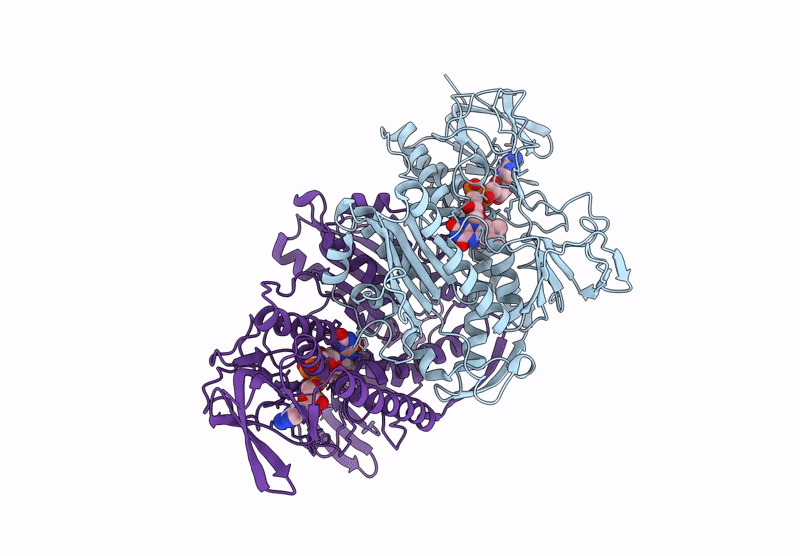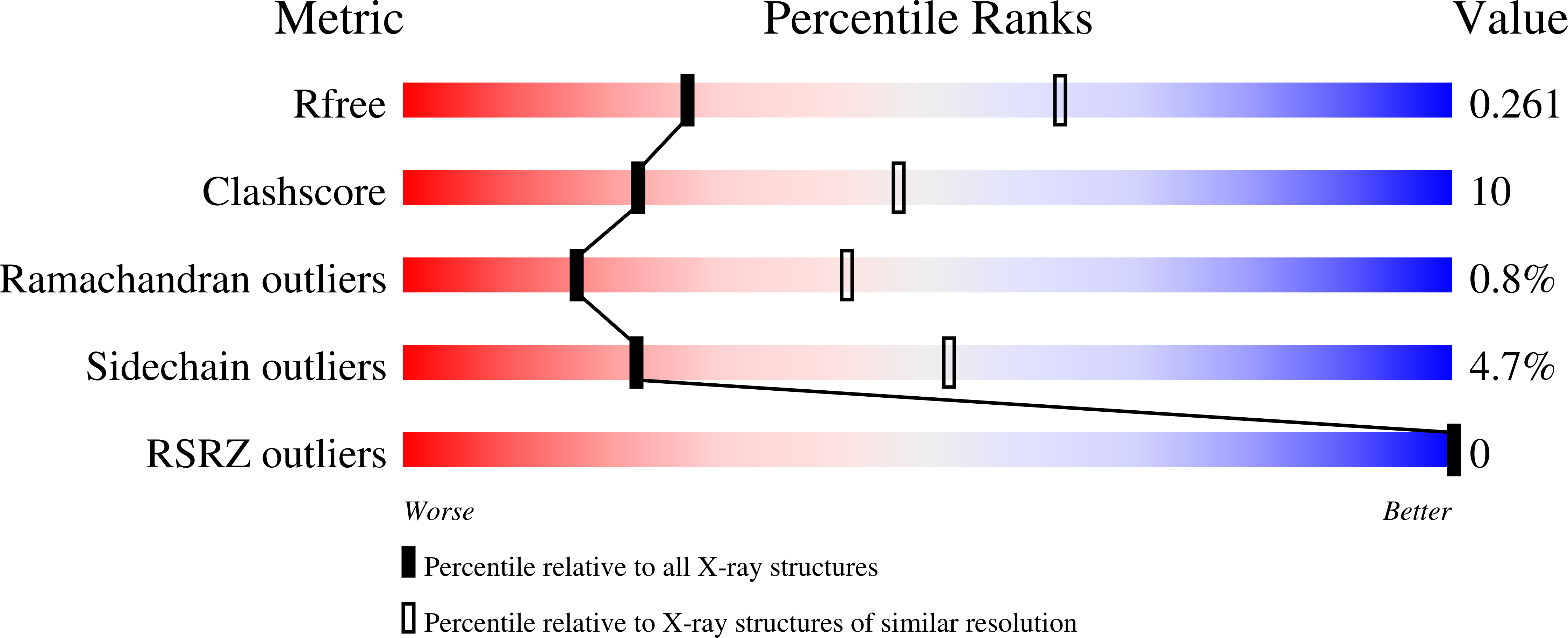
Deposition Date
2024-08-08
Release Date
2025-05-07
Last Version Date
2025-05-28
Entry Detail
PDB ID:
9GEZ
Keywords:
Title:
Crystal structure of thioredoxin reductase from Cryptosporidium parvum in the "waiting" position
Biological Source:
Source Organism:
Cryptosporidium parvum (Taxon ID: 5807)
Host Organism:
Method Details:
Experimental Method:
Resolution:
2.88 Å
R-Value Free:
0.26
R-Value Work:
0.23
R-Value Observed:
0.23
Space Group:
P 21 21 21


